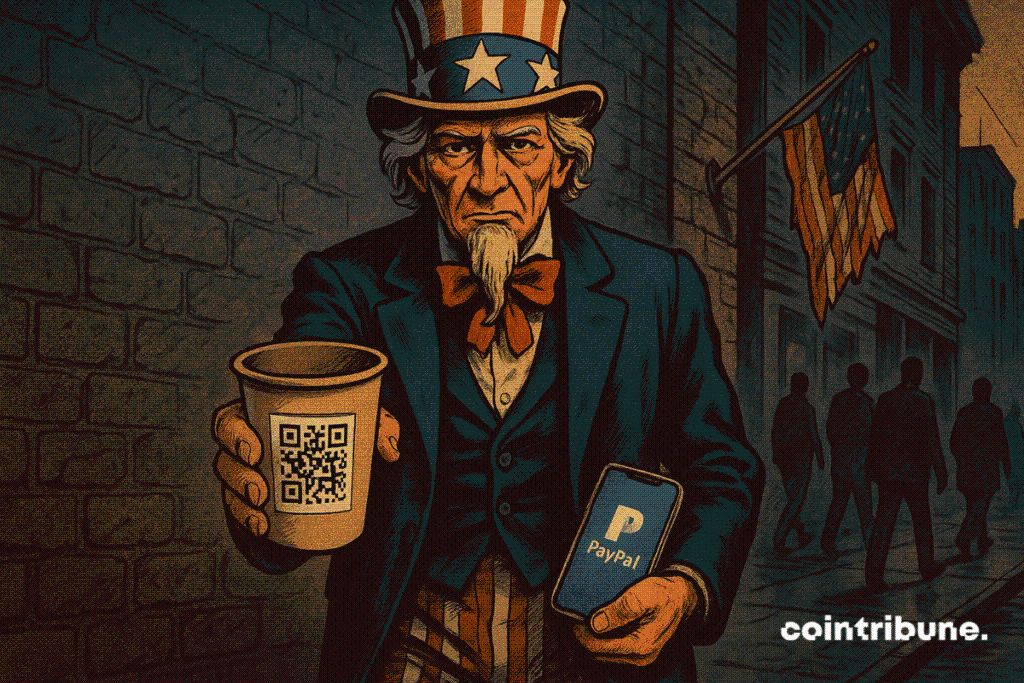Public Debt Donations Go Digital In The US
Paying the national debt with a simple click on Venmo and PayPal : an absurd idea? Not for the U.S. Treasury, which now offers citizens the option to voluntarily contribute to the $36.7 trillion federal debt via PayPal and Venmo. Integrated into the Pay.gov platform, this unexpected measure blends consumer technology with macroeconomic management in a gesture that is symbolic yet meaningful.

In Brief
- The U.S. government now allows citizens to send donations via Venmo and PayPal to help reduce the national debt.
- This new option is part of the “Gifts to Reduce the Public Debt” program, active since 1996, which has collected only $67.3 million in nearly 30 years.
- The U.S. national debt currently stands at $36.7 trillion, an 87 % increase since 2010.
- The use of payment apps aims to modernize donation collection, especially among younger, digitally native users.
Venmo and PayPal : The U.S. Treasury Opens the Door to Donations 2.0
On July 25, 2025, the U.S. Department of the Treasury authorized citizens to make voluntary donations to help reduce public debt via Venmo and PayPal, two of the most popular payment platforms in the United States. These payments can be made from the “Gifts to Reduce the Public Debt” page on the Pay.gov website, active since 1996.
Here are the key facts to remember :
- The donation program has existed for nearly 30 years but had only raised $67.3 million until today ;
- The U.S. national debt has reached a historic high of $36.7 trillion, up 87% since 2010 (when it was $19.59T) ;
- The official goal is to facilitate citizen contributions to debt reduction, amid growing concerns about the country’s fiscal sustainability ;
- The use of Venmo and PayPal also aims to modernize the program’s image, making it accessible to a generation accustomed to mobile payments.
However, the initiative is not unanimous. Several voices from the financial sector question its real usefulness. Samson Mow, CEO of bitcoin company JAN3, ironically said : “it’s like sending bitcoin to a burn address”.
He suggests that these contributions are purely symbolic or even ineffective given the colossal debt. This remark, from the crypto world, reflects deep skepticism about this type of call for financial civic responsibility, often seen as a political cover-up rather than a credible budget tool.
Between Political Strategy and Economic Warnings
Beyond the donation initiative, current U.S. fiscal policy is dominated by the debate over the new tax bill proposed by Donald Trump. Nicknamed the “Big, Beautiful Bill”, this legislation is expected to increase the debt by an additional $3.4 trillion over the next decade, according to projections by the Congressional Budget Office (CBO).
This trajectory has caused notable tensions, especially with Elon Musk, who publicly criticized the planned $5 trillion increase to the debt ceiling due to the reform. These confrontations reflect a deep divide over the American fiscal strategy, between debt-driven stimulus and budget austerity.
Meanwhile, Ray Dalio, founder of Bridgewater Associates, sounds the alarm. According to him, “we are spending 40 % more than our income”, which could lead to a situation where the government “would borrow solely to pay interest on its debt”. He warns of a “deadly debt spiral” if urgent reforms are not implemented.
Dalio estimates that the probability of a “financial trauma” caused by a sudden loss of confidence now exceeds 50 %. In response, he calls for reducing the deficit to 3 % of GDP, down from nearly 7% currently, through a mix of budget cuts and tax increases.
In this climate of polarization, Treasury Secretary Scott Bessent advocates a more optimistic approach. He asserts that the tax reform will yield positive effects within ten years, notably thanks to tariffs, which are expected to generate $2.8 trillion over the period. He even claims that the current year could bring in $300 billion in customs revenues, nearly 1 % of GDP. Last June, the government reportedly posted a budget surplus.
While the opening to donations via Venmo and PayPal marks a notable technological evolution in public fundraising practices, it cannot hide the seriousness of the structural challenges facing the world’s leading economic power. Behind the participatory facade lie heavy political choices, deep ideological fractures, and a growth model under pressure. As the numbers swell and voices rise, the question is no longer whether the debt is sustainable, but how much longer it will be, as China has just let it go .
Disclaimer: The content of this article solely reflects the author's opinion and does not represent the platform in any capacity. This article is not intended to serve as a reference for making investment decisions.
You may also like
Japanese AI Firm Quantum Solutions Buys 3,000 BTC
Nigeria SEC Embraces Stablecoin Adoption
Pakistan’s Youth Drives Surge in Bitcoin Adoption

Visa Strategizes Stablecoin Integration, No Threat Perceived

